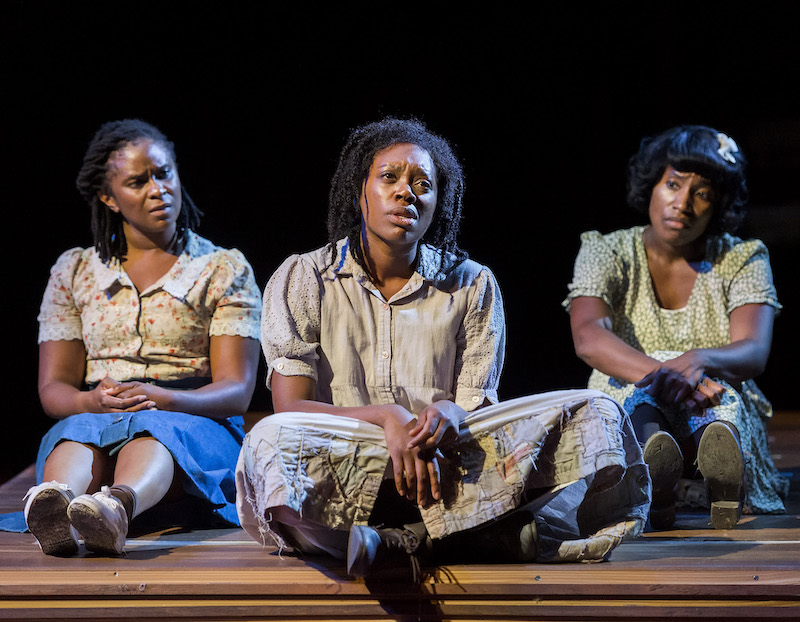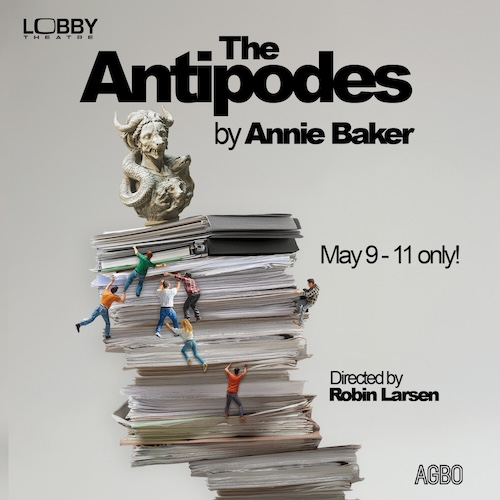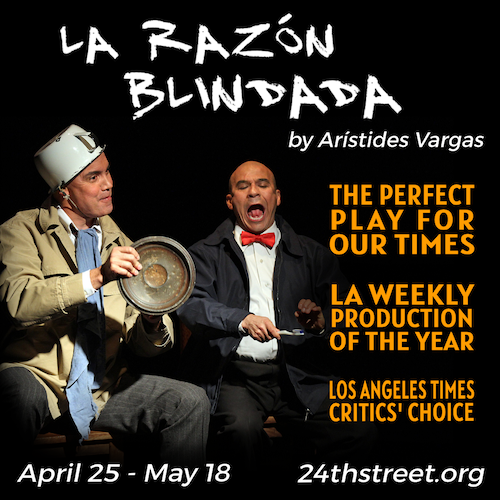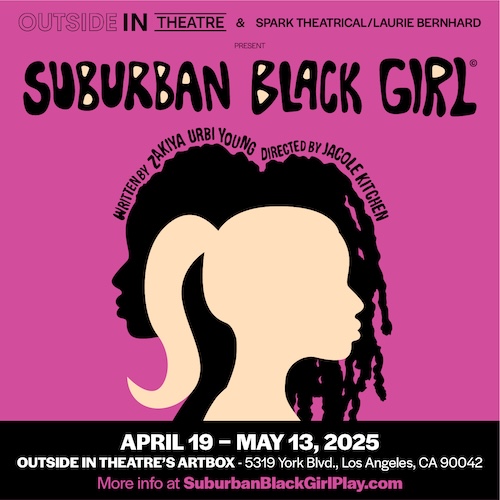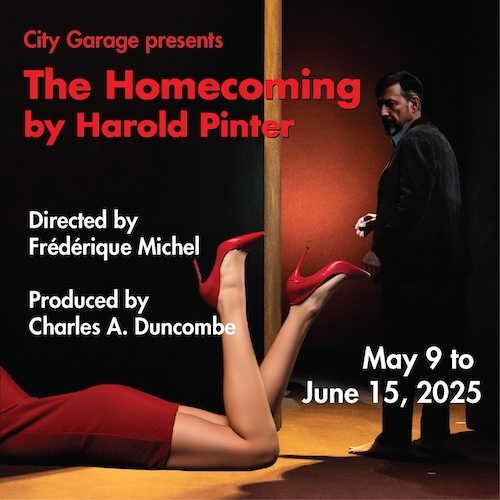
Kacie Rogers, Akilah A. Walker, and Mildred Marie Langford (Photo by Craig Schwartz)
Reviewed by Deborah Klugman
A Noise Within
Through September 24
The Bluest Eye was Toni Morrison’s first novel — published in 1970, when the one-day-to-be Nobel laureate was 39 years old, and the Civil Rights Movement, begun in the late 1950s/early 1960s, was loudly and collectively demanding the abolition of systemic racism for the first time in American history.
During that era, racism remained entrenched (yes, more blatantly and treacherously than today). Stereotypes of gender and race flooded the media and were bought into not only by the vast majority of unthinking men and White people, but also by vulnerable and susceptible women and people of color, whose self-worth was to become permanently damaged by these phony images and forcibly stunted expectations.
Which is one reason why the slogan “Black is Beautiful,” which came out of those years, has endured. And why a writer of Morrison’s stature chose to write about this ugly, unhappy phenomenon: victims of racism coming to acquiesce to their own victimhood. It was a theme she returned to again and again throughout her distinguished career.
In The Bluest Eye, the story builds around the experience of a hapless young Black girl named Pecola, living in a small rural community in Ohio in the 1940s. A victim of abuse at the hands of her father, but also, more broadly, a captive of American culture’s embedded racist propaganda, the pre-teen Pecola perceives herself as “ugly” and in need of White features to redeem her worth.
It’s the latter theme (rather than an interfamilial tale of sexual abuse) that’s underscored in Lydia R. Diamond’s graceful adaptation of Morrison’s book, first commissioned by Chicago’s Steppenwolf Theatre in 2006 and currently directed by Andi Chapman at A Noise Within.
The non-linear presentation swings from present to past and back as it portrays the youth of Pecola’s parents and the obstacles and trauma in their lives that have brought their family to its current dire straits. Most of the story is told by Claudia (Kacie Rogers), a youngster who gets to know Pecola (Akilah Walker) after she comes to live with Claudia’s family. This consists of Claudia, her sister Frieda (Mildred Marie Langford), their strict but loving Mama (Crystal Jackson) and their caring if overly instructive Dad (Alex Morris). Pecola’s integration into their home comes about after Pecola’s alcoholic father (Kamal Bolden) burns down their family house.
The three girls spend time together; they visit the workplace of Pecola’s mom’s, referred to by all as Mrs Breedlove (Julanne Chidi Hill) who (after the girls knock over a pie) demonstrates more affection for her employer’s blonde child than for her own. They encounter Maureen (Alexandra Metz), a new girl at school who is rich and pretty and light-skinned and wants to be friends, but this ends badly when resentment at Maureen’s advantages provokes the others to quarrel.
The play, like the book, encapsulates a community of poor folk with a mixture of flaws and virtues with a current of kindness and humor filtering through their difficult lives. Playwright Diamond pays homage to her source by infusing it with Morrison’s language and metaphor, beautifully capturing the book’s spirit and rhythm.
So it’s disappointing that what flows smoothly on the page doesn’t manifest quite as well on stage. It isn’t that the performances are inadequate — they range from capable to good — but that the challenges presented by this particular narrative aren’t easy to overcome. Somehow the high points of the drama get swallowed in the rhythms of the storytelling and fail to create the impact that they should.
One problem for me is the lighting (Andrew Schmedake). Most of the play takes place in dim light that accurately reflects the impoverishment and struggle in these people’s lives but, practically speaking, prevents one from clearly observing the actors’ faces (Could they not have been spotlighted?). The play opens with a terrifically evocative image (scenic design by Fred Kinney) a background scrim that displays a dark red and purple sky seemingly hovering over the land — but after that the story plays out in a stark space; a few more well-chosen props or set pieces would add ambience and flavor to the changing scenes, the story’s patchwork progression. What does work is Jeff Gardner’s comic sound design that frequently augments the dark humor scattered throughout the story.
Finally, I could not help but note that here again was a play that might better have been served in a more intimate space than this 324 seat venue, close enough for the audience to gauge the actors’ pulse. One example might be this director’s accomplished staging of playwright Nambi E. Kelley’s adaptation of Native Son at Antaeus Theatre Company in 2018 — a searing and powerful theatrical experience, bearing an analogous message, that I won’t soon forget.
A Noise Within, 3352 E. Foothill Blvd., Pasadena. Fri.-Sat., 8 pm, Sat.-Sun., 2 pm, Thurs., Sept. 7 & Sept. 21; thru Sept. 24. https://anoisewithin.org. running time: one hour and 45 minutes with no intermission.

